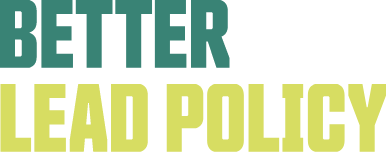In order for a city to effectively implement a proactive rental inspection program, there must be adequate staffing to meet the need. If the inspection program is city-run, there need to be enough inspectors to complete inspections for all rental units during the inspection cycle. To determine whether a city has an adequate number of inspectors, the city must determine how many inspections each inspector can perform each year.
Let Inspectors Do Inspections: To increase the number of inspections each inspector can do, cities should consider providing robust administrative support so that inspectors can spend their time doing inspections instead of paperwork.
Workforce Development: Where a proactive rental inspection uses third-party inspectors, the city should work to ensure there are enough inspectors in the market so that inspections are affordable.
- In Detroit, Michigan, some homeowners were waiting a month for certified inspectors.
- Milwaukee, Wisconsin – “One of the issues that we are dealing with is developing a workforce to deal with not only these homes but on an ongoing basis to have a pipeline of workers to help us,” said Mayor Barrett.
- Rochester, New York made an effort to hire inspectors from the neighborhoods they would be inspecting. They adopted a program that allowed new inspectors to train on the job, bypassing restrictions on the types of education and training otherwise needed to hold an inspector position, and in hiring they looked for applicants with customer service experience. This approach increased trust from the local neighborhoods and increased job opportunities in the neighborhoods being inspected.
Audit Third-Party Inspectors: If a proactive rental inspection program requires or allows the use of third-party inspectors, best practice is for the city to regularly audit those inspectors as a form of quality control.
- Rochester, New York’s program allowed third-party inspectors to complete dust wipe clearance tests after lead remediation. The city discovered a number of private clearance firms were falsifying dust wipe tests. Because Rochester’s lead law gave the city the authority to audit and sanction third-party clearance testing firms found to have poor quality control, the city discovered the fraud and suspended the offenders from doing dust wipe tests for a year.
Use Updated Technology: Another best practice is for inspectors to use electronic tablets in the field to record the results of the inspection. Having information technology support can streamline inspections, enforcement, and information sharing. Many cities struggle with outdated information technology systems across the city platforms. Upgrading the systems may be costly in the short term, but can save time and money in the long run.
- Cleveland: To support its new proactive rental inspection program, Cleveland is spending $100,000 for upgrades to the Building & Housing Department software system, called Accela, used to track permits and housing and health code violations. The system, which citizens can access, also will be used to track lead-safe certifications.
Ensure the Budget is Big Enough:
- Charge Fees to Cover the Cost of the Program: A best practice for a proactive rental inspection program is for the program to be self-sustaining by charging landlords fees to cover the cost of the program. However, rental fees tend to vary widely, and few cover the cost of maintaining the proactive rental inspection program. Some examples of fees are included below
|
| Type of fee | Amount | City |
| Program Fee
|
$35 per unit (not to exceed $2000 biennially)
|
Washington, DC
|
| Registration fee
|
$45 per building per year
|
Santa Cruz, CA
|
| $70 per unit | Cleveland, OH | |
| Single family: $25
Two-family: $50 (non-owner occupied) |
Buffalo, NY | |
| $0 | Lewiston, ME | |
| One or two family non-owner occupied: $150
|
Syracuse, NY
|
|
| Inspection fee
|
$127 per inspection performed & $16 annual program fee
|
Sacramento, CA
|
| Reinspection fee
|
$100 for each reinspection
|
Kansas City, MO
|
| Certificate of Occupancy
|
1 family: $60
2 family: $80 3 or more: $100 + $10/unit |
Rochester, NY
|
| Rental License | $55 | Philadelphia, PA |
Any Fines Generated By Non-Compliance Should Be Collected and Directed Back into the Program: Another source of funding for a city’s lead poisoning prevention program should be any fines collected by the city for non-compliance with the lead laws. In many cities, fines collected go directly to the city’s general fund. A best practice would be to draft an ordinance to ensure that fines collected from non-compliance with the lead law are directed back into the lead program.
- Many cities do not collect housing fines. Examples of cities that are lax in collecting lead fines include New York City and Buffalo. Cities should collect the fines, make the fines escalating, and consider criminal liability for the worst violators.
- In New York City: Overall, 2,212 penalties for violations of Health Code § 173.14 have amassed $1,976,870 in imposed fines. A 2019 analysis showed only $10,190—or 0.5 percent—of the amount owed in lead-related penalties has been paid. In the past 15 years, only 12 penalties have been collected as a result of adjudications in the Office of Administrative Trials and Hearings. Over 15 years, the Department of Health and Mental Hygiene has imposed 21 times the amount of penalties for street vending violations than it did for lead-related violations; street vendors paid over $5 million in penalties while property owners paid just over $10,000 for lead-related violations.
Support from the Mayor and City Leadership is Critical: Mayor Tom Barrett proposed $20 million in Milwaukee, Wisconsin’s budget devoted to address lead in water and paint, and staffing up the Public Health Department. The mayor also sought to address vacancies in the city’s Childhood Lead Poisoning Prevention program and sought to secure support from federal grants.

